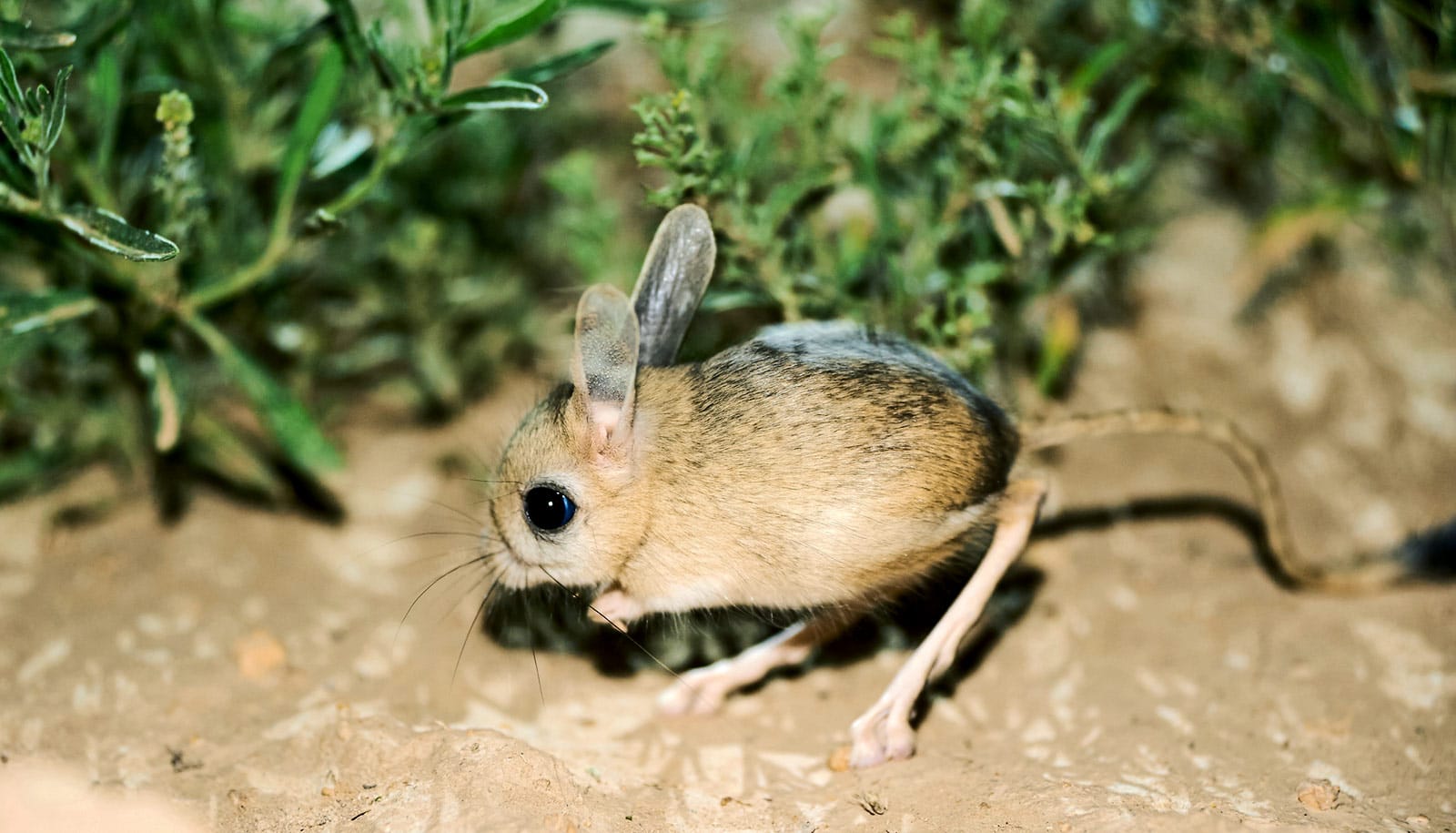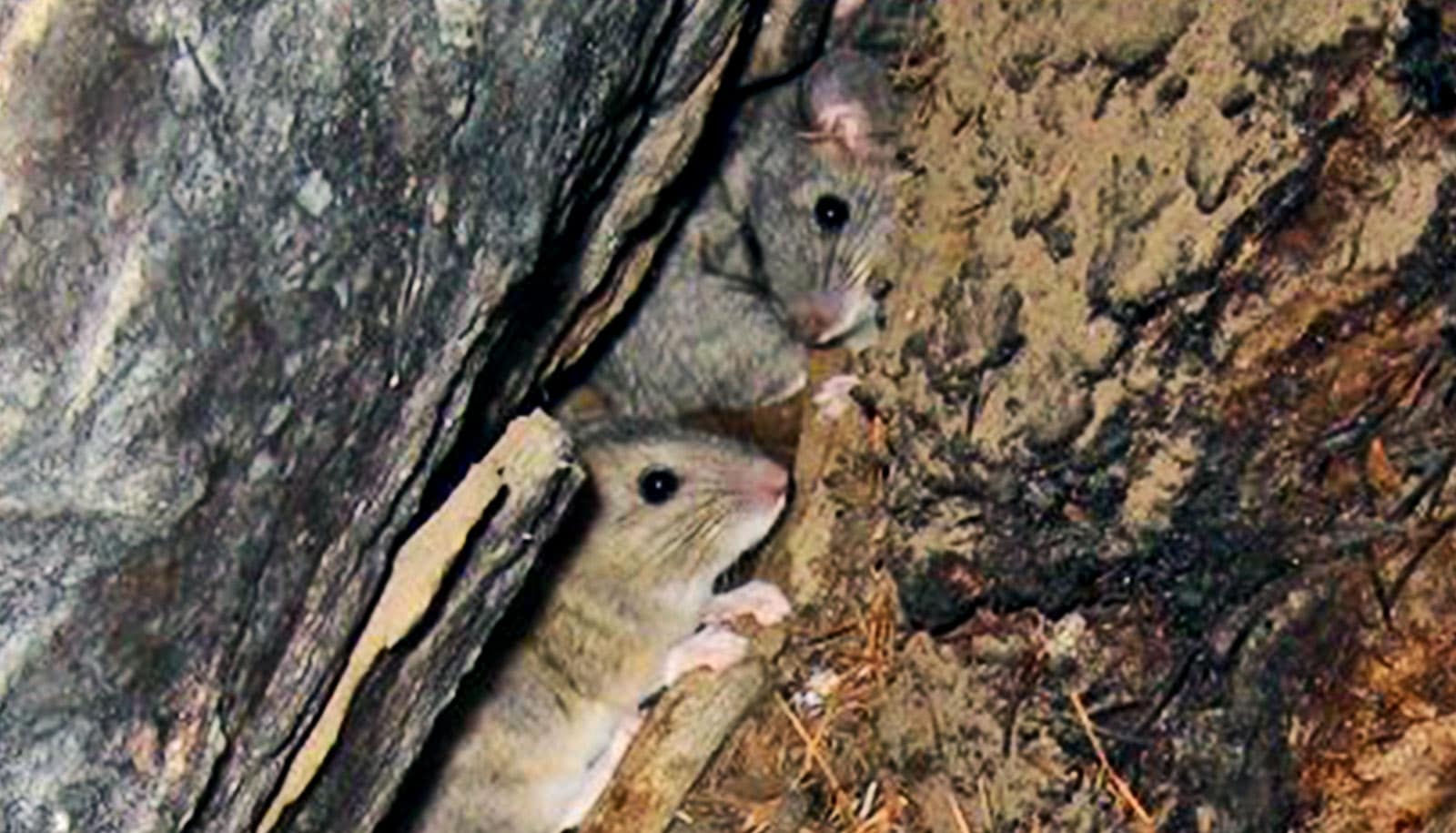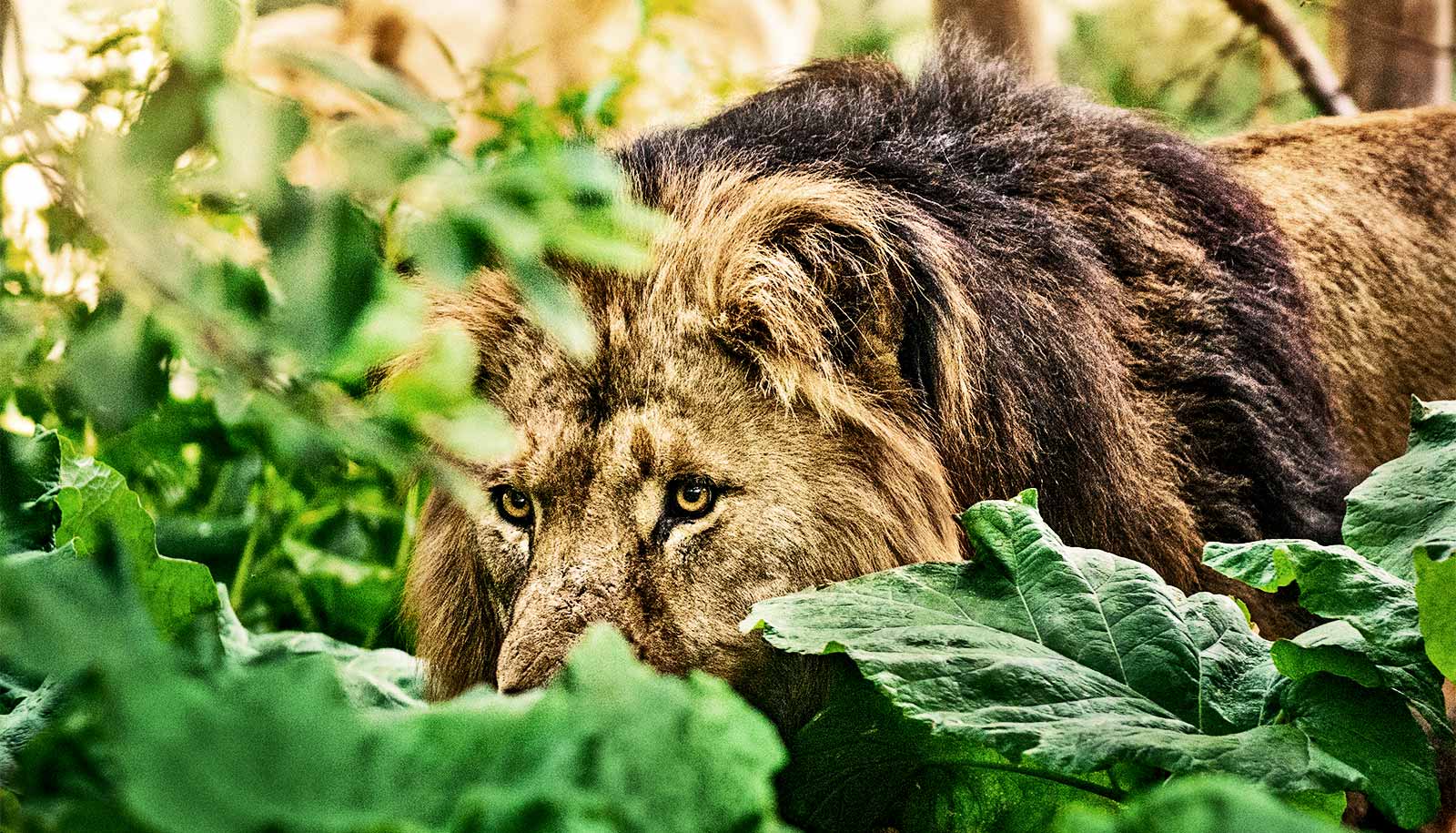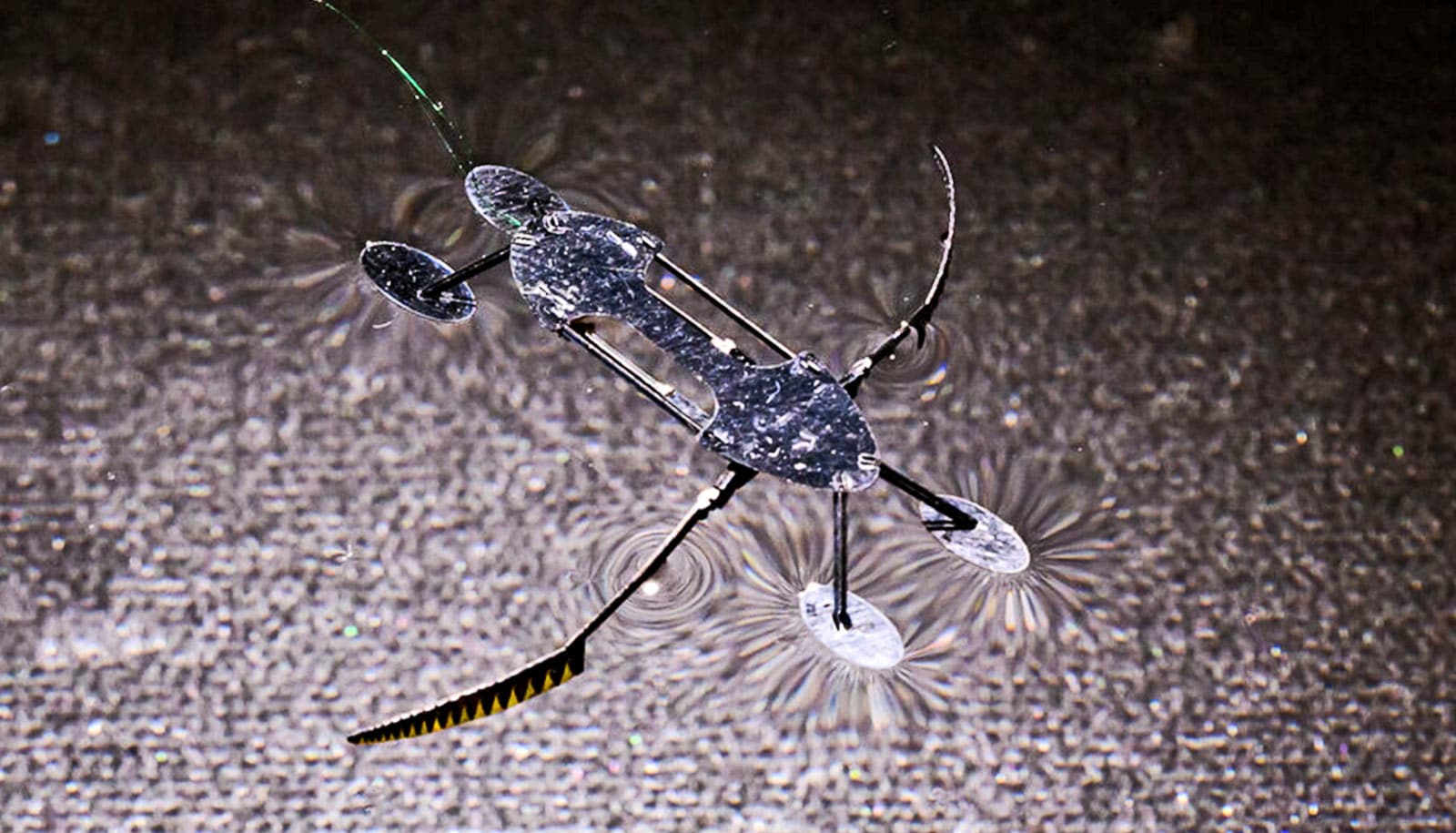When bipedal desert rodents called jerboas are being chased, sudden changes in direction, gait, and speed help them elude hungry predators and likely give them a competitive edge over their quadrupedal neighbors, a new study suggests.
“We developed a method to measure the unpredictability of animal movements in 3D and used it to study escape-related movement in several species of desert rodents,” says Talia Moore, an evolutionary biologist at the University of Michigan.
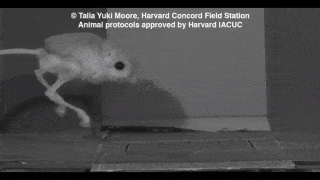
The findings may help engineers make biomimetic robots that are tailored to specific environments. The results also suggest that bipedalism in desert rodents may have evolved to limit interspecies competition and to increase animal diversity.
Moore, a postdoctoral research fellow in the ecology and evolutionary biology department, found that the jerboa’s superior evasiveness arises from its unique gait use. Although bipedalism has evolved multiple times in different types of rodents—including kangaroo rats and Australian hopping mice—jerboas are the only group observed to use three different footfall patterns, or gaits, when moving on their long hind legs: hopping, skipping, and running.
While previous observations suggested that jerboas hop at the lowest speeds, skip at intermediate speeds, and run at the highest speeds, Moore’s team found no significant difference between the mean speed of each gait.
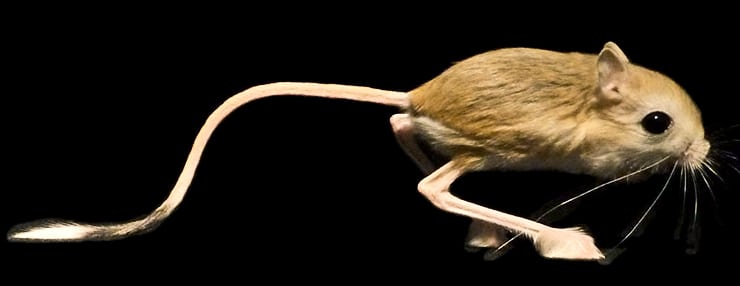
Through a set of laboratory experiments, Moore and her colleagues showed that jerboas move with step-to-step changes in gait, which cause frequent changes in stride length, direction and speed. Their evasive maneuvers can include momentary bursts of acceleration, kangaroo-like hopping, erratic zigzagging, and acrobatic leaps.
Moore and her colleagues suspected that these herky-jerky movements help jerboas foil an aerial predator’s efforts to calculate an intercept course. Since they wanted to see how these animals behave in their natural habitat, they traveled to northwestern China and designed a novel set of field experiments to study whether quadrupedal, gerbil-like jirds, and bipedal jerboas escape predators in different ways.
Most of what is known about animal locomotion was learned from treadmill studies involving straight-line movement at a nearly constant speed over long periods of time—predictable gaits. Since jerboas can leap more than half a meter high (more than 10 times their hip height) and are always changing directions, Moore and her colleagues had to develop a way to measure unpredictability in three dimensions.
“This increased unpredictability… gives them an edge in the evolutionary arms race between predator and prey.”
They borrowed a metric of randomness, called entropy, from information theory and used it to measure rodent unpredictability as jerboas and jirds escaped simulated predation. It is the first quantitative method to characterize terrestrial locomotion in three-dimensional space.
“We found that the bipedal jerboas were much more unpredictable than the quadrupedal jirds,” Moore says. “This increased unpredictability likely arises from their unique gait use and gives them an edge in the evolutionary arms race between predator and prey.”
To test whether the jerboa’s unpredictability truly corresponds to increased predator-evasion success, the researchers performed behavioral experiments that measured the animals’ tendency to seek shelter, which is called thigmotaxis.
Small foraging animals that are susceptible to predation face a conflict between the need to explore new areas for food and the desire to remain in covered areas safe from predators. Due to this conflict, the amount of time an animal spends in an open area varies with its ability to evade predators: as evasiveness increases, the behavioral affinity to shelter, and so-called “open-field anxiety,” decrease.
The researchers measured rodent thigmotaxis to test the prediction that bipedalism in jerboas is associated with a decrease in open-field anxiety, which would further support their hypothesis that bipedalism increases predator evasion ability.
During simulated predation trials, Moore and her colleagues observed that the bipedal jerboas explored the entire experimental enclosure, while jirds tended to remain near the walled periphery. She performed a second experiment in the lab with captive-bred animals that had never seen predators before. The results from both experiments suggest that bipedalism in rodents is associated with lower thigmotaxis (movement away from physical contact) and greater predator evasion in open settings.
The methods invented in this study help to bring quantitative biomechanics out of the lab, where animals are examined in artificial environments, and into the field, where animals are responding to life-and-death situations.
The results show that understanding how morphology, locomotion, and behavior evolve can help biologists understand the ecological structure of animal communities.
In addition, the findings may have applications in the field of robotics. Much of the work on robot locomotion involves smooth and predictable motion in low-variability environments. Incorporating unpredictable and variable motion should improve the performance of robots that mimic living organisms and that travel on the same terrain.
“This work points at a new way of building a robot that may be useful in navigating desert environments or desert planets,” says Ram Vasudevan, an assistant professor of mechanical engineering and a coauthor of the paper. “We want to try and build robots that are capable of thriving in all sorts of environments.”
He recalled a time NASA’s wheeled Curiosity rover got stuck in the Martian desert.
“It dug a deeper and deeper hole,” he says. “What if they had taken a look at how these rodents travel through the desert? Evolution has found a suitable solution several times over. Until now, we haven’t appreciated how useful a system it is in this context.”
The study appears in the journal Nature Communications.
Additional researchers who contributed to the work are from Harvard University; the University of California, San Diego; and the University of Michigan.
A Chapman Memorial Scholarship to Moore funded the study in part.
Source: University of Michigan
